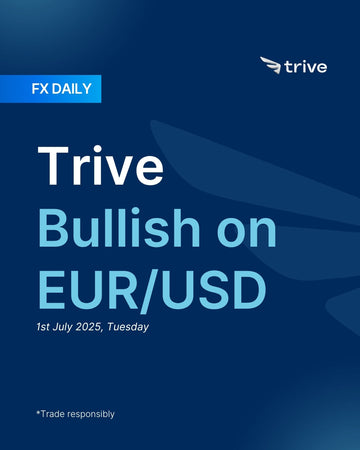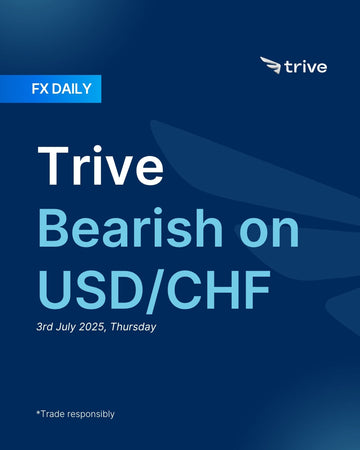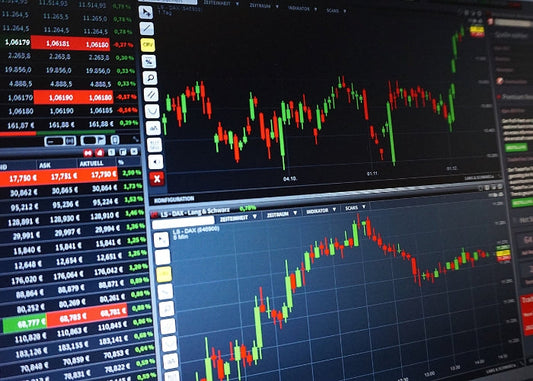FX Daily: Trive Bullish on GBP/USD

The British pound remains marginally supported, backed by a resilient economy, a positive trade agreement with the US, and its relative ‘safe haven’ status among high-beta currencies. In contrast, concerns over stagflation, doubts about the Fed’s independence, and potential policy shifts under Trump continue to weigh on the US dollar’s appeal.
GBP: Remain supported, but marginally
The British Pound surged to its highest level since early 2022, benefiting primarily from the sharp decline in the US Dollar. Sterling gained steadily throughout the week, rising from below 1.3400 to a peak of 1.3770. This rally had little to do with domestic conditions, which remained soft, and was instead driven almost entirely by external factors.
The key boost came from the rapid easing of tensions between the US and Iran, which removed a layer of geopolitical risk that had been supporting the dollar. More importantly, a Wall Street Journal report suggesting President Trump might try to replace the Fed Chair early triggered a sharp drop in US Treasury yields. This raised serious concerns about the independence of the Federal Reserve and pushed markets to aggressively sell the dollar, giving the Pound room to rally.
Despite this strong move, Bank of England officials maintained a cautious tone throughout the week. Governor Bailey remarked on early signs of a weakening labour market and confirmed that the path for interest rates is gradually moving lower. Deputy Governor Ramsden explained his recent vote in favour of a rate cut was due to noticeable softening in the jobs market. BoE’s Greene echoed this, pointing to weak underlying activity. As a result, market expectations for BoE rate cuts stayed firm, with more than a 60% chance of a 25 basis point cut in August and roughly 50 basis points of easing expected by year-end.
Domestic data was mostly ignored by the market, but it didn’t paint a strong picture. Although the Flash Manufacturing PMI for June came in slightly better than expected, other indicators were much weaker. Both the CBI Industrial Trends Orders and the Distributive Trades survey fell well short of forecasts, reinforcing the view that the UK economy is cooling.
Political developments added another layer of uncertainty. Reports suggested that Prime Minister Starmer could face pushback from within his party over plans to cut welfare spending. This, combined with other spending pledges, may lead to a budget shortfall of up to £4.5 billion, raising speculation about possible tax increases in the upcoming Autumn budget. While the market mostly ignored this for now, it could become a concern later on.
Overall, the Pound’s strong performance this week was driven less by confidence in the UK and more by global factors, especially the weakening dollar. The rally picked up speed after the dollar lost its geopolitical support and then accelerated when fears about the Fed’s independence emerged. From a technical standpoint, the break above the 2022 high of 1.3749 was important and helped push the currency even higher as momentum buyers stepped in.
We were cautiously bullish on the Pound one of the reasons being that the US Dollar lost key support after tensions with Iran eased and concerns about Fed independence emerged. A Wall Street Journal report suggesting Trump might replace the Fed Chair caused a sharp drop in Treasury yields, which triggered broad USD weakness.
Even though UK data remained soft and the Bank of England kept a dovish tone, we felt the external environment mattered more this week. Once GBP broke above the 2022 high at 1.3749, momentum kicked in and helped push it even higher. So we saw this as a dollar-driven rally and thought it made sense to be long GBP while that pressure on the dollar lasted.
However, the dovish comments could suggest trouble ahead. With Final GDP, Final PMIs, and Bailey’s speech, our bias could shift more towards the bearish side if the data prints weaker and Bailey continues with dovish remarks.
USD: Throw it away
The US Dollar dropped to multi-year lows during a week marked by a sharp shift in geopolitical tensions and rising concerns about the Federal Reserve’s independence. The DXY started the week with a sudden but brief jump to 99.42, driven by safe-haven flows after a surprise US military strike on Iranian nuclear facilities. However, the dollar’s strength quickly faded when Iran’s response was seen as mostly symbolic and a ceasefire was soon announced. This rapid de-escalation sent the dollar into decline.
Attention then turned to tensions within the Fed itself. Some policymakers supported a July rate cut, but most officials pushed back, preferring a more cautious, wait-and-see approach. The most significant moment came late Thursday, when the Wall Street Journal reported that President Trump was considering announcing a successor to Fed Chair Powell ahead of the 2026 term end. This move was widely viewed as a threat to the central bank’s independence, sending the dollar to a multi-year low of 96.99. The week ended with the dollar still under pressure, as a slightly higher-than-expected PCE inflation reading failed to offset the broader uncertainty and cooling trade tensions.
The May Core PCE Price Index, the Fed’s preferred inflation measure, came in slightly hotter than expected at 0.2% month-on-month and 2.7% year-on-year. Still, the reaction was limited by weaker figures elsewhere, including an unexpected drop in personal spending and income. A flood of data on Thursday added to the uncertainty. The final Q1 GDP was revised down to -0.5%, but the Core PCE deflator was revised up to 3.5%, raising concerns about stagflation. Jobless claims offered mixed signals, and a spike in durable goods orders was driven entirely by a large and volatile aircraft order. Consumer confidence fell unexpectedly, and both new home sales and exports dropped in May, widening the trade deficit.
The sharpest drop in the dollar followed the WSJ report about Trump possibly announcing a new Fed Chair before Powell’s term ends. Governor Waller, who is seen as dovish, was mentioned as a possible choice. Markets interpreted this as an attempt to steer the Fed in a more politically favorable, dovish direction. Within the Fed, a divide became clearer. While some like Governor Bowman and Waller supported a near-term rate cut, others including Powell, Williams, Bostic, Kashkari, and Barr favored holding off until the effects of tariffs become clearer. Despite the resistance, markets began to price in a 25 basis point rate cut by the September FOMC meeting, moving expectations forward from October.
On the geopolitical front, the week began with the US launching “Operation Midnight Hammer” against Iranian nuclear sites, which pushed oil prices and demand for the dollar higher. But within a day, the situation reversed after Iran’s limited response and a ceasefire announcement by Trump. This quick de-escalation turned into a drag on the dollar. The trade narrative also eased. The White House announced a framework deal with China, clarifying existing agreements. Reports also suggested the EU might lower tariffs on US imports to secure a deal. Officials began to downplay the importance of the July 9th tariff deadline, with some hinting that agreements could be reached by Labor Day. Meanwhile, Trump paused trade talks with Canada and threatened new tariffs over its digital services tax.
Market sentiment shifted dramatically. It started with a risk-off move supporting the dollar, but as geopolitical fears faded, the market turned toward selling the dollar. From mid-week on, the main driver of this shift was fear of US policy instability, especially concerns about the Fed’s independence following the WSJ report.
We saw a clear shift toward a bearish outlook on the dollar this week, and it mainly came down to two things: the rapid easing in geopolitical tensions and growing concerns over the Fed’s independence. The initial safe-haven boost from the US-Iran conflict faded quickly after Iran’s response was mostly symbolic and a ceasefire was announced. That de-escalation pulled risk appetite back in, weakening the dollar.
At the same time, concerns about the Fed’s independence surged after reports that Trump might replace Chair Powell early, which shook market confidence and pushed the dollar to multi-year lows. Even though Core PCE came in slightly hot, weak spending, lower income, and a GDP downgrade raised stagflation fears and limited any bullish reaction.
For these reasons, our baseline bias is bearish. However, with the PMI’s and Job Report coming up, we’ll be ready to adapt. Very strong PMI’s and a strong NFP could shift the near term bias to bullish.

Disclaimer
This material is provided for informational purposes only and does not constitute financial, investment, or other advice. The opinions expressed in this material are those of the author and do not necessarily reflect the views of Trive International. No opinion contained in this material constitutes a recommendation by Trive International or its author regarding any particular investment, transaction, or investment strategy. This material should not be relied upon in making any investment decision.
The information provided does not consider the individual investment objectives, financial situation, or needs of any specific investor. Investors should seek independent financial advice tailored to their individual circumstances before making any investment decisions. Trive International shall not be liable for any loss, damage, or injury arising directly or indirectly from the use of this information or from any action or decision taken as a result of using this material.
Trive International may or may not have a financial interest in the companies or securities mentioned. The value of investments may fluctuate, and investors may not get back the amount they originally invested. Past performance is not indicative of future results.
For more information about Trive International, please visit http://trive.com/int
Additional Information
Investing involves risk, including the potential loss of principal. Diversification and asset allocation strategies do not ensure a profit or guarantee against loss. The content in this material is subject to change without notice and may become outdated or inaccurate over time. Trive International does not undertake any obligation to update the information in this material.
By accessing this material, you acknowledge and agree to the terms of this disclaimer. If you do not agree with these terms, please refrain from using this information.
No comments
Home
Trive
TriveHub





0 comments